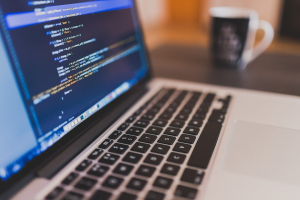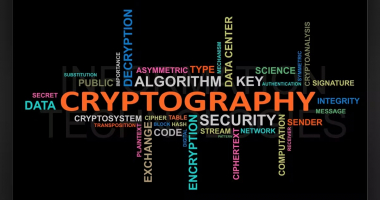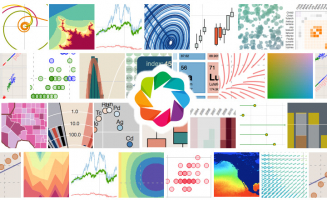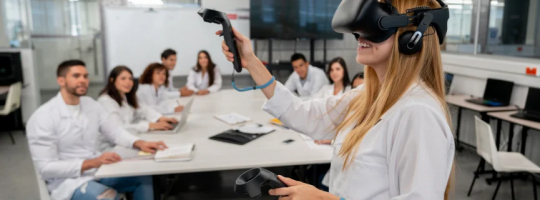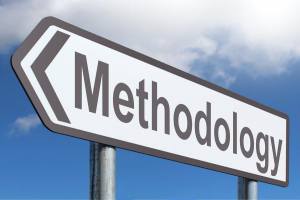Top 8 Best Online Arduino Courses
Popular as an open-source software and hardware platform, the Arduino is a perfect tool for creating interactive objects and digital devices capable of ... read more...controlling and sensing the surroundings. Fortunately, there are several courses created to help the aspirants become an ace Arduino programmer. The availability of many online resources makes it tough for people to find the right tutorial according to their specific needs. For your ease, Toplist have come up with the list of best online Arduino courses in the subject that are worth your time and money.
-
By accepting information from add-on devices like sensors, Arduino can perceive its surroundings and control its surroundings by modifying motors, lights, and other actuators. You will learn how to utilize the various types of sensors and when to connect them to the Arduino in this course.
You will discover how these signals are transformed back and forth because the outside world utilizes continuous or analog signals while the hardware is digital and how this must be taken into account while programming your gadget. Additionally, you'll learn how to communicate with the outside world using shields designed specifically for Arduino and software libraries for them. Please be aware that there are no discussion forums in this course.
ABOUT THIS COURSE:
- Flexible deadlines: Reset deadlines based on your availability.
- Shareable certificate: Get a Certificate when you complete
- 100% online: Start now and learn when it's convenient for you.
- Course 3 of 6 in the: Specialization An Introduction to Internet of Things Programming
- Approx. 11 hours to complete
- Subtitles: Arabic, French, Portuguese (European), Italian, Vietnamese, German, Russian, English, Spanish
Rating: 4.7/5
Level: Beginner
Cost: Free enrolment
Duration:14 hours (approximately)
Enroll here: coursera.org/learn/interface-with-arduino
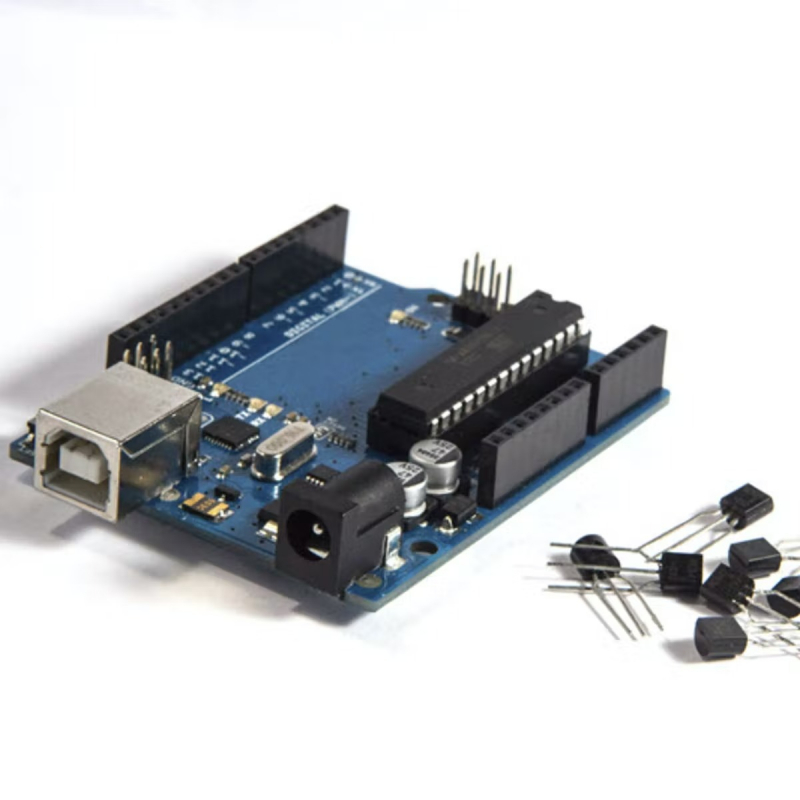
coursera.org 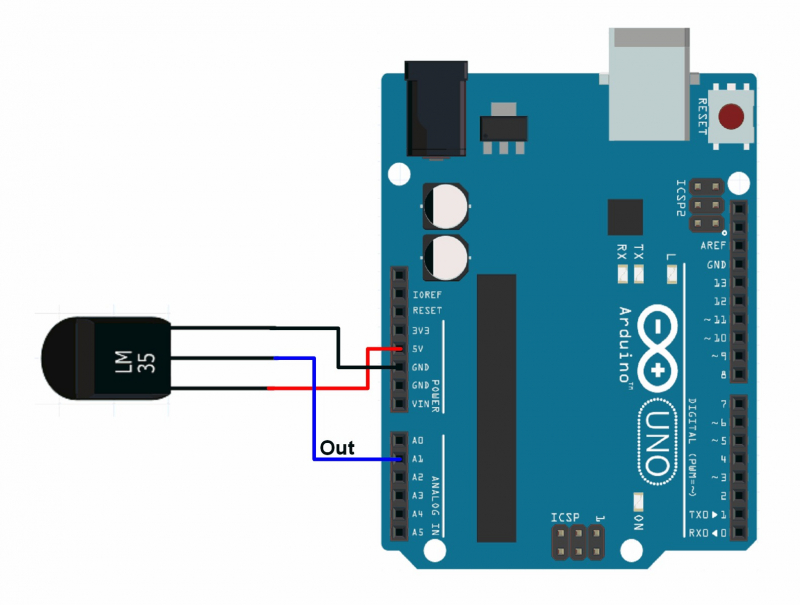
electronicwings.com -
It is one of the best online arduino courses for anyone interested in learning more about arduino. Are you an Arduino creator who can construct things by reading how-to instructions and is comfortable creating or updating sketches, but not so much with things like calculating transistor currents, voltage dips, and filtering with capacitors?
You're not on your own. For years, they have been teaching Arduino and Raspberry Pi classes. During this time, thay have come to learn that, while these platforms are fantastic for getting you started with electronics, you won't be able to fully appreciate their potential until you've mastered basic electronics. This is the focus of this course. It's all about assisting you in gaining a better grasp of the fundamental electronics concepts and components that are widely utilized in projects on platforms like the Arduino and Raspberry Pi.
The Basic electronics for Arduino Makers, one of the best online arduino courses, is for anybody who has a basic grasp of electronics and has already experimented with Arduinos. You will have learnt how to use widely used components in Arduino projects at the conclusion of this course. You'll also know how to do the necessary measurements and calculations to assist you in choosing the right components for your projects. You'll need a few inexpensive and common components and tools to finish this course: resistors, capacitors, transistors, LED, diodes, and batteries. A multimeter, a tiny breadboard, and jumper wires are also required. You most likely already have all of these items.WHAT YOU WILL LEARN:
- Understand the concepts of voltage, resistance and current
- Use Ohm's Law to calculate voltage, current and resistance
- Use Kirchhoff's Laws to calculate voltage and current
- Understand the meaning of and calculate energy and power
- Use resistors in various configurations, like in voltage dividers and voltage ladders
- Read the value of a resistor from its package
- Use pull-up and pull-down resistors
- Understand the use of capacitors
- Use capacitors as energy stores and filters
- Calculate the RC time constant of a capacitor
- Understand diodes
- Measure the voltage drop of a diode
- Understand how to use rectifier and zener diodes
- Protect a circuit from reverse polarity
- Understand how to use a transistor to control low and high power loads
- Calculate the currents and base resistor for a bipolar transistor
- Use the correct voltage regulator for any circuit
Rating: 4.6/5
Level: Intermediate-Advanced
Cost: $84 approx. (Full Lifetime Access)
Duration: 7.5 Hours (approximately)
Enroll here: udemy.com/course/basic-electronics
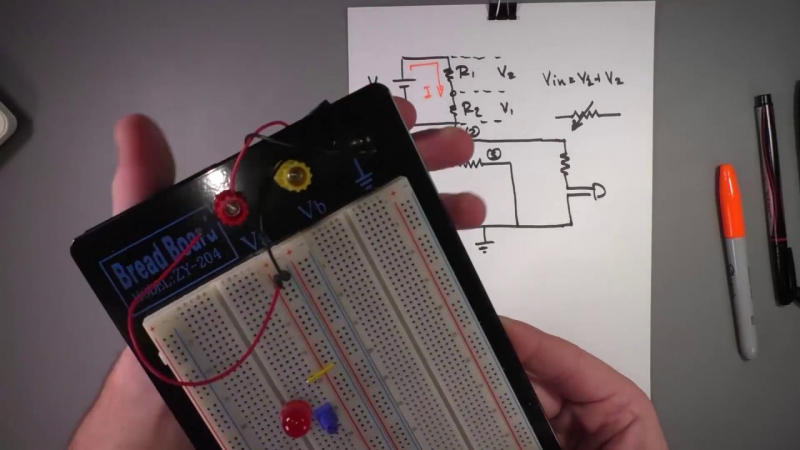
youtube.com -
The new Arduino Maker is the focus of this lesson. Do you have a strong desire to learn new things? Are you looking forward to using the Arduino to become a Maker? If you replied "yes!" to both questions, you're ready to go! They stressed the significance of getting the basics correct and learning to mastery while creating this course. As a teacher with over 15 years of experience, they know how demotivating it can be to face a roadblock because you lack the essential information needed to move forward. They make sure that they cover all of the essentials in Arduino Step by Step Getting Started's more than 16 hours of video content, small projects, and quizzes so that you may enjoy learning about the Arduino. By the end of the course, you'll have a thorough knowledge of the Arduino Uno's capabilities, as well as the capabilities of many of its cousins, making it the finest Arduino for beginners.
You'll know how to use the most fundamental prototype tools, as well as the Arduino programming environment, language, and programming. A wide range of components will be available to you. From basic buttons and LEDs to visible color and ultraviolet light, as well as various environmental sensors, there's something for everyone. You'll learn how to read datasheets, utilize libraries on your own, and gain the skills you need to make the gadgets you want on your own, in addition to learning how to use the components they teach in this course. With knowledge comes freedom, and they will assist you in achieving it. They encourage you to examine the free lectures in the course's first section to learn more about it.WHAT YOU WILL LEARN:
- Build simple circuits around the Arduino Uno, that implement simple functions.
- Write simple Arduino sketches that can get sensor reading, make LEDs blink, write text on an LCD screen, read the position of a potentiometer, and much more.
- Understand what is the Arduino.
- Understand what is prototyping.
- Understand analog and digital inputs and outputs
- Understand the ways by which the Arduino can communicate with other devices
- Use the multimeter to measure voltage, current, resistance and continuity
- Use protoboards to make projects permanent
- be productive with the Arduino IDE, write, compile and upload sketches, install libraries
- Understand what is Arduino programming, it's basic concepts, structures, and keywords
- Detect and measure visible light, color, and ultraviolet light
- Measure temperature, humidity and acceleration
- Measure the distance between the sensor and an object in front of it
- Detect a person entering a room
- Detect a noise
- Make noise and play music
- Display text on a liquid crystal display
Rating: 4.6/5
Level: Beginner-Intermediate
Cost: $126 approx. (Full Lifetime Access)
Duration: 16.5 Hours (approximately)
Enroll here: udemy.com/course/arduino-sbs-17gs
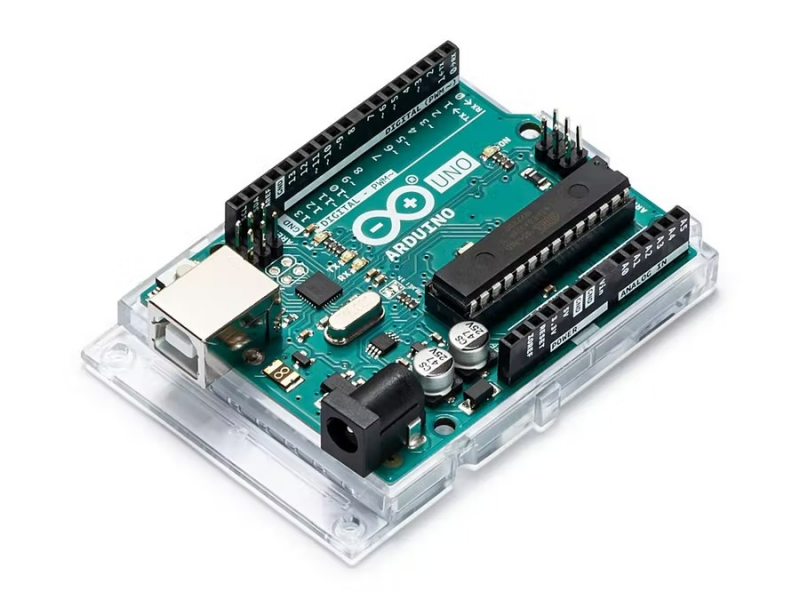
create.arduino.cc 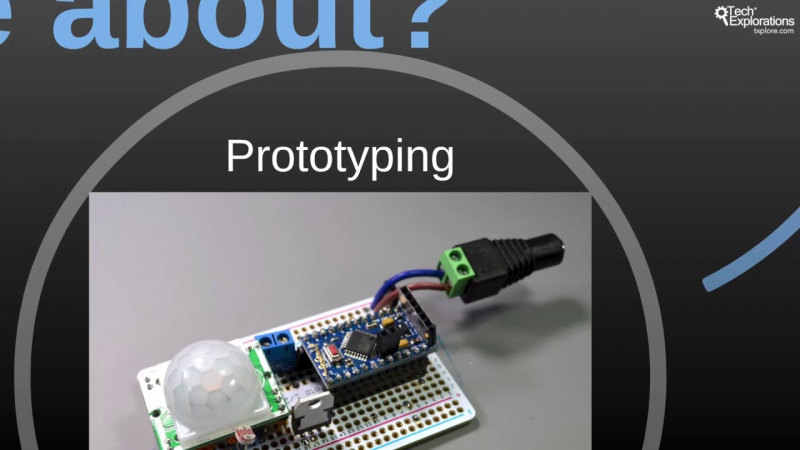
youtube.com -
The Arduino is a free and open-source computer hardware and software platform for creating digital gadgets and interactive things that can perceive and control their surroundings. This session will teach you how to use the Arduino platform, including the actual board, libraries, and IDE (integrated development environment).
Shields, which are tiny boards that connect into the main Arduino board to do additional duties like sensing light, heat, GPS tracking, or giving a user interface display, will also be covered. The course will also cover programming the Arduino with C code and utilizing the software to control external devices via the pins on the board. Please note that there are no discussion forums included in this course.
ABOUT THIS COURSE:
- Flexible deadlines: Reset deadlines based on your availability.
- Shareable certificate: Get a Certificate when you complete
- 100% online: Start now and learn when it's convenient for you.
- Course 2 of 6 in the: Specialization An Introduction to Internet of Things Programming
- Approx. 1 p.m. to finish
- Subtitles: Arabic, French, Portuguese (European), Italian, Vietnamese, German, Russian, English, Spanish
Rating: 4.6/5
Level: Beginner
Cost: Free enrolment
Duration: 16 Hours (approximately)
Enroll here: coursera.org/learn/arduino-platform
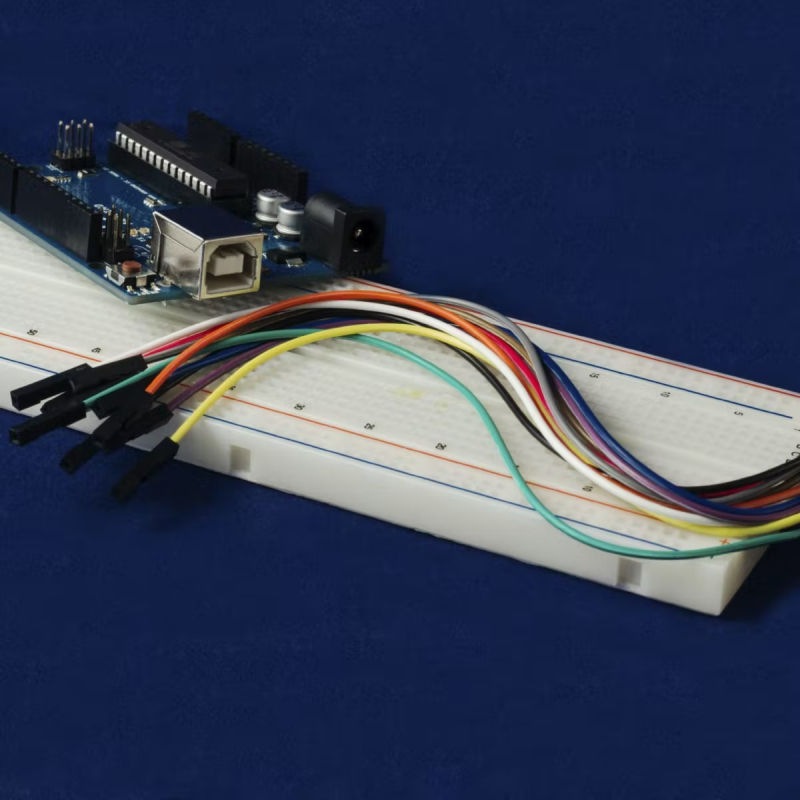
coursera.org -
Create robots, interactive art displays, electronic toys, home automation tools, and more with the Arduino platform and programming language. This course was developed in partnership with Hackster. Learn the skills you'll need to use electronics to bring your designs to life:
- Learn how to program in C/C++ using Arduino.
- Create electronics that can perceive and react to their surroundings.
- Log data to an Internet of Things (IoT) platform from afar.
- Control your Arduino from anywhere in the world via the Internet.
Arduino is both a programming language and a hardware platform. You may add a new level of interaction to your projects, prototype future products, and develop new skills by learning how to build circuits and code (while hopefully having fun). C and C++ are used to create the Arduino programming language. You'll be able to learn new languages more readily if you grasp key coding essentials, such as Java, Python, JavaScript, C#, and Swift, which are in great demand in the employment market. Arduino was initially published in 2003 and has since grown in popularity among makers, hobbyists, and tinkerers who use it to create everything from animatronic sculptures to interactive wearables. Professional engineers and entrepreneurs frequently use an Arduino to produce a prototype before moving on to the next step in the process. The iconic blue board has made its way into classrooms, where it is used to teach programming, electronics, critical thinking, and problem-solving abilities.
This course was created with the absolute beginner in mind: it's fine if you've never done any programming or electronics before! The first few lessons introduce you to the fundamentals of programming in C/C++ using the Arduino platform, as well as how to construct simple circuits that flash lights and spin motors. After that, they will continue exploration of producing sounds, detecting the surroundings, and developing a robot. Finally, they go into the realm of IoT, where they will learn how to send and receive messages over the Internet, allowing us to do things like switch on a light with smartphone!
Each video course is intended to provide you with one knowledge building block. Almost every lesson is followed by a hands-on practice in which they urge you to extend or combine earlier building blocks. To assist you in learning, they give solutions to each activity. Furthermore, most parts include a project that requires you to synthesize many of the topics presented in that area as well as earlier ones. You will have the skills and knowledge needed to construct entertaining and useful Arduino projects after finishing this course.WHAT YOU WILL LEARN:
- Master the fundamentals of Arduino programming with C/C++
- Build functioning circuits on a breadboard
- Control sensors, robots, and Internet of Things (IoT) devices using Arduino
- Write programs that perform basic math, light up LEDs, and control motors
- Design circuits and write code for your own project
Rating: 4.6/5
Level: Beginner
Cost: $126 (Full Lifetime Access)
Duration: 7 hours (approximately)
Enroll here: udemy.com/course/arduino-programming-and-hardware-fundamentals-with-hackster
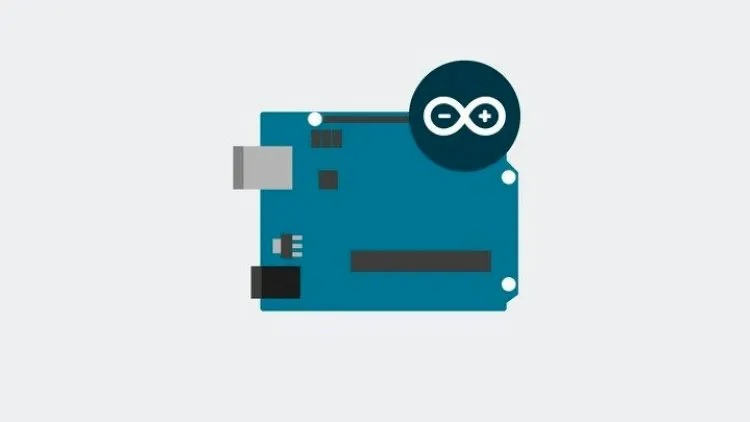
downloadfreecourse.com 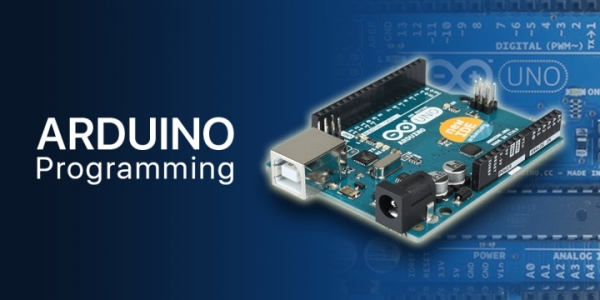
onlinecoursedownload.com -
Anyone interested in working in electronics or designing electronic boards or products should learn the fundamentals of board design. Learning to design circuit boards with the correct software may open doors to many organizations, help you gain a well-paying career, and can be used to create highly complicated and sophisticated circuit boards.
Create a real board while learning the fundamentals of Altium Designer.
- Create your own diagram
- Layout and route your PCB
- Create the necessary documents for your PCB to be manufactured.
This course will teach you how to utilize the Altium Designer program. Altium Designer is a professional program that may be used to design a wide range of circuit boards, from simple circuit boards through motherboards and servers. It is one of the most widely used electronic design programs. Anyone interested in or already working in electronics can benefit from learning Altium. You'll begin by looking at the Arduino Uno reference schematic. You'll learn how to redraw the schematic, tweak it, and enhance it, as well as how to execute PCB layout. The training videos are step-by-step, and even if you are new to electronics or have never used Altium Designer before, you will be able to create your own board by repeating these procedures. You will have created all of the necessary documentation to manufacture the board by the conclusion of this course.
WHAT YOU WILL LEARN:
- After this course, you will design your own Arduino like board.
Rating: 4.6/5
Level: Beginner
Cost: $122 approx. (Full Lifetime Access)
Duration: 14.5 hours (approximately)
Enroll here: udemy.com/course/learn-to-design-your-own-boards
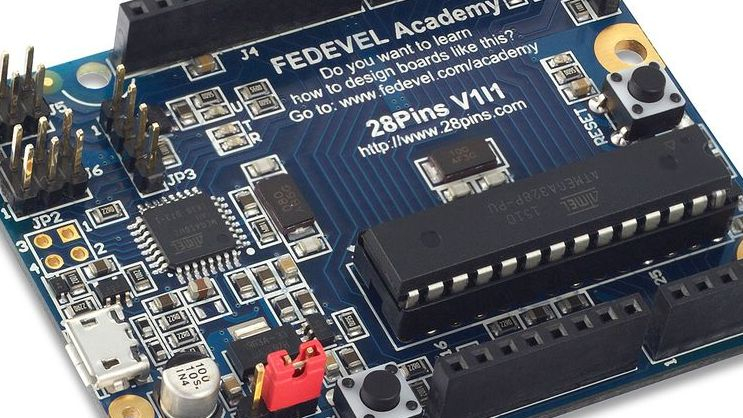
welldoneblog.fedevel.com -
Welcome to Tech Explorations Arduino Step by Step Getting Serious, where you'll expand your understanding of Arduino components and techniques while learning new abilities in the world's largest and most comprehensive course! Arduino is the most popular electronics learning and prototyping platform in the world. It is used by millions of individuals all around the world to study electronics, engineering, programming, and to construct incredible things, such as greenhouse controllers and remotely driven lawnmowers.
It's a stepping stone to a career in engineering, a teaching tool for STEM (Science, Technology, Engineering, and Math), and a medium for artistic and creative expression. The course is broken down into 40 parts with over 250 lectures totaling over 30 hours of video content. You will learn about a distinct topic in each segment. Each subject includes the following information:
- A number of code samples
- Diagrams for wiring
- Examples of a fully functional circuit
- Different situations
Peter, the instructor and creator of this course, walks you through the code and circuit wiring step by step, explaining each line of code and each wire in the circuit.
This course is not for folks who are new to Arduino. It does not cover the fundamentals of the Arduino, such as how to use the Arduino IDE, flash an LED, or make a simple program and circuit. If you're new to Arduino, Tech Explorations' Arduino Step by Step Getting Started course is a good place to start.
A student in this course must be willing to work hard and have a basic grasp of the Arduino. Without real work, you won't be able to develop significant talents. There are several courses available that promise a pleasurable and simple learning experience. One of them isn't this. They guarantee you will have a lot of hard work ahead of you.What about the tools and components? They just ask that you arrive with an eagerness to learn and a desire to work hard, aside from a few fundamental tools and pieces that you may learn about in the first session of the course (which is free to view). The course has a lot of different components, but you don't have to (or shouldn't) receive them all to start learning. Getting all of these pieces too soon is actually a bad idea! To learn why in the first portion of this course, watch the free lecture.
Do you think you should join right now? Before enrolling in this course, watch the free lectures in the first segment. They provide useful information that will assist you in determining whether or not this is the proper option for you. They are excited to learn from you!
WHAT YOU WILL LEARN:
- Use communications technologies like Wifi, BLE, and radio
- Use servo, DC and stepper motors with various controllers
- Use LCD, OLED and TFT screens with buttons and touch interfaces
- Store data in external storage like SD Cards and EEPROM
- Optimize a sketch to minimize memory footprint, reduce power consumption and increase performance
- Control large loads like relays and lights
- Improve button reliability with hardware debouncing
- Much more, please see curriculum for a full listing
Rating: 4.5/5
Level: Intermediate-Advanced
Cost: $169 (Free Lifetime Access)
Duration: 34 hours (approximately)
Enroll here: udemy.com/course/arduino-sbs-getting-serious
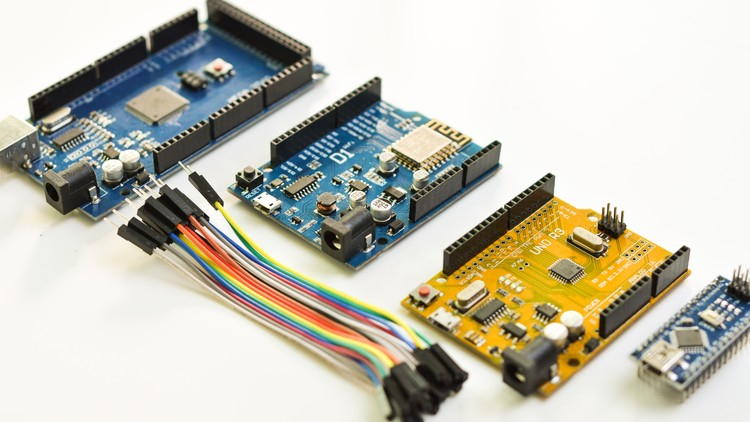
freecoursesite.uk -
This is a project-based, hands-on approach to learning the Arduino platform that is appropriate for all levels of experience. In the Arduino Bootcamp course,one of the best online arduino courses, you'll work on projects like:
- An Arduino automobile that can be controlled through a smartphone app.
- Your very own Arduino phone, capable of making and receiving phone calls as well as sending and receiving text messages.
- Your very own Universal Arduino Remote, capable of copying and replaying IR signals from any electrical device.
- An Arduino Online Weather Station that uses the internet to receive and show weather data specific to your area.
- Light, sound, and joysticks are used in Arduino gaming projects.
- There's so much more...
In this bootcamp, you'll learn Arduino rapidly and become adept by creating entire projects from scratch. For each project, they employ the following approach:
- For each project, a full background of all electronics concepts and operation of electrical components will be explained first.
- The circuit diagram will then cover the component wiring as well as the project layout.
- After that, detailed step-by-step tutorials will show you how to wire up and assemble the project's components.
- The code will be published to show how the project works.
- Following that, a comprehensive line-by-line code study will explain how the software and hardware components interact.
- You'll get the entire picture, and it's a far better approach to learn Arduino than by building full-fledged projects from the ground up!
The course is divided into three sections: Simple Projects, Intermediate Projects, and Advanced Projects, allowing you to graduate to or begin at any level depending on your Arduino experience. If you're new to Arduino, the first few lectures will rapidly introduce you to the platform and show you how to utilize it. After that, you can go on to easy projects to get experience with fundamental electrical components.
You can go directly to the intermediate projects section if you're already comfortable with Arduino and want to take your abilities to the next level. Next, for those who are already familiar with Arduino, there is an advanced projects section where they tackle projects such as an online weather station, a remote-controlled car that you can drive with a smart phone app, and a working phone that can make and receive calls, among others.
I've always felt that project-based learning is the ideal technique since it allows you to learn by doing and creating something useful. This is the strategy they are using in this class. They will walk you through each project's electrical concepts, teach you how to wire up the circuits, and go through the code line by line to show you how it all works.WHAT YOU WILL LEARN:
- Build a remote-controlled car you can drive with a smart phone app
- Build your own cell phone that you can make/receive calls and send/receive text messages with
- Build games using the Arduino incorporating light, sound and joystick controllers
- Understand components like ultrasonic sensors, motor drivers, servos, transistors, bluetooth/wifi/gsm modules
- Understand many common electronic components and how they work
- Have the confidence to build complex electronics projects
- Learn how to prototype electronics projects
- Be a confident maker and prototyper
Rating: 4.4/5
Level: Beginner
Cost: $126 approx. (Full Lifetime Access)
Duration: 9.5 hours (approximately)
Enroll here: udemy.com/course/arduino-bootcamp
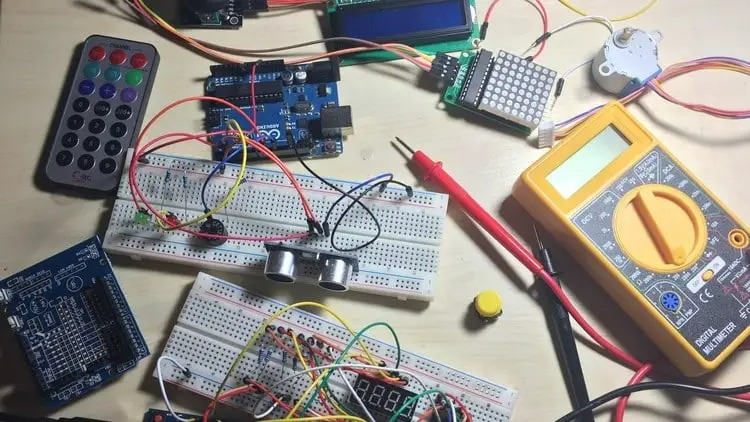
tutorialsplanet.net 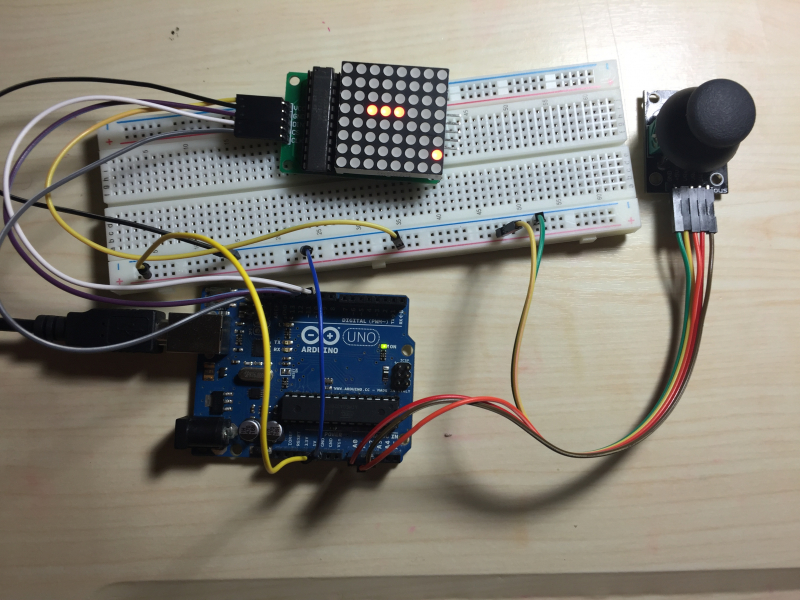
powerlearningacademy.com










